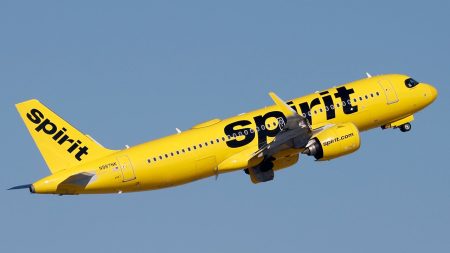A barge struck the Fort Madison Bridge in Iowa, causing it to sink in the Mississippi River. The incident occurred around 1 p.m. and led to the closure of the swing gate bridge, which was reopened by 4:15 p.m. Fortunately, there were no reported injuries in this incident. The U.S. Coast Guard revealed that 15 barges were being moved by a tug boat when one of them broke loose and collided with the bridge. Video footage captured the barge stuck against the bridge and later sinking into the river. This incident is reminiscent of the Francis Scott Key Bridge collapse in Baltimore, where a container ship caused the bridge to collapse, resulting in six deaths.
Despite the potential for a more severe outcome, Lee County Sheriff Stacy Weber stated that the situation was contained well, and thankfully, no one was injured. The bridge was closed to all traffic to allow BNSF to assess for damage. The Fort Madison Bridge, which is double-decked with a double-track railway on the lower deck and two lanes for road traffic on the upper deck, was deemed safe for rail and vehicular traffic by BNSF Railway. According to reports, the barge involved in the incident was carrying corn and is owned by Ingram Barge Company based in Nashville, Tennessee. The bridge is significant, as it was the world’s largest double-deck swing-span bridge when it opened in 1927.
This incident occurred just weeks after a similar incident in Pittsburgh, where more than two dozen river barges broke loose and floated down the Ohio River, causing damage to a bridge and a marina. The barges eventually came to a stop along the riverbank or went over a dam downstream. The Fort Madison Police Department confirmed that BNSF Railway certified the bridge as safe and allowed traffic to resume. It was reported that between 40 and 100 trains crossed the bridge daily in 2022. The closure of the bridge for inspection and repair likely caused disruptions in the transportation of goods and people across the river.
The safety of the bridge and the waterways is a critical concern following incidents like what happened at the Fort Madison Bridge. The barge towing company, authorities, and other relevant parties need to ensure that proper protocols are in place to prevent similar incidents in the future. The investigation into the cause of the barge collision with the bridge is likely to uncover details that can help prevent such accidents in the future. The swift action taken by authorities to assess the damage, certify the safety of the bridge, and resume traffic is commendable, as it minimizes disruption to the flow of goods and people across this vital infrastructure.
Incidents involving ships, barges, or other vessels colliding with bridges highlight the importance of safety protocols and regulations in the water transport industry. The potential consequences of such incidents can be catastrophic, as seen in past bridge collapses caused by collisions. Through proper enforcement of safety measures, regular inspections, and swift response in case of accidents, authorities can ensure the safety of both the infrastructure and the people who rely on it. As investigations into the Fort Madison Bridge incident and other similar incidents continue, lessons can be learned to improve safety standards and prevent future accidents.













